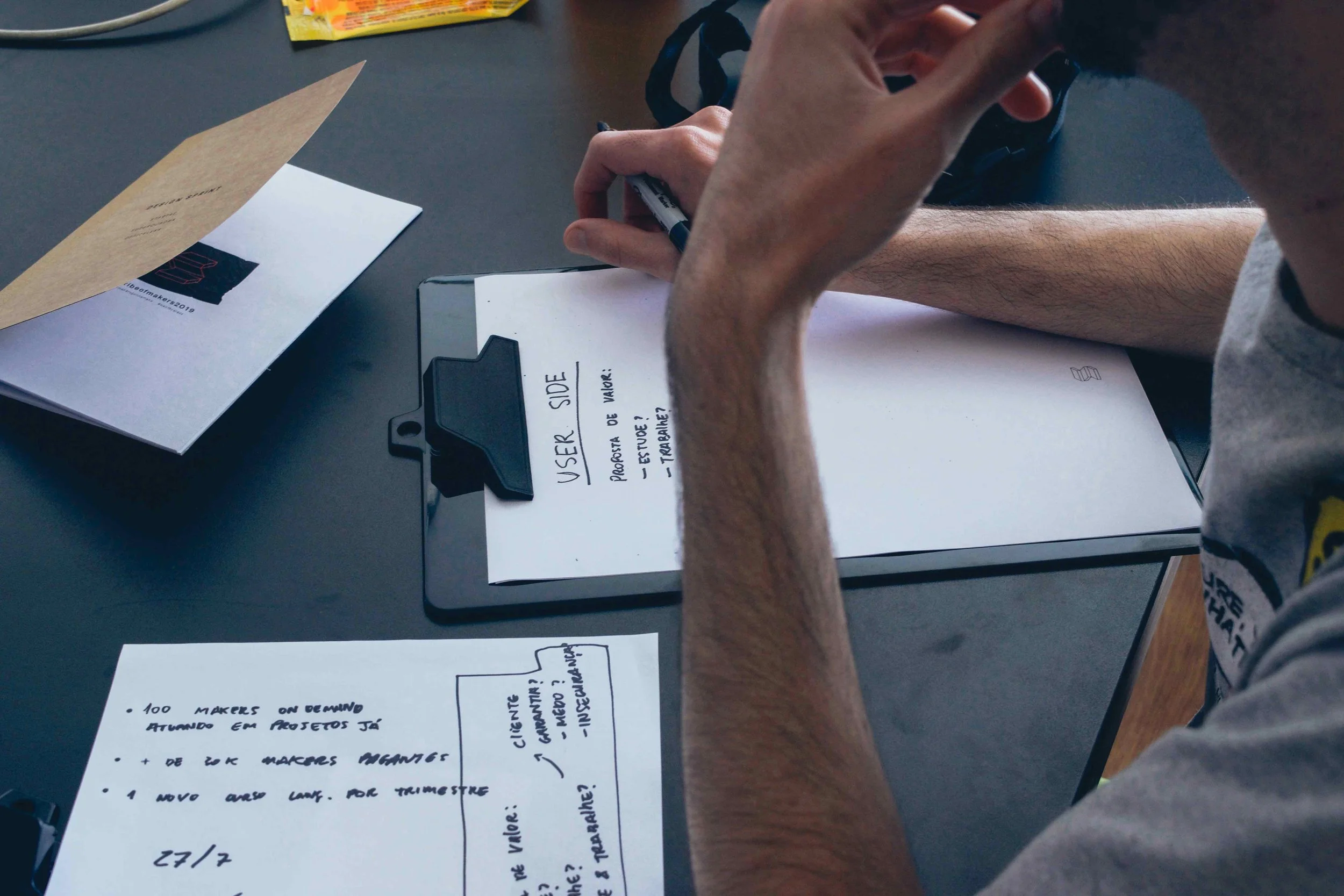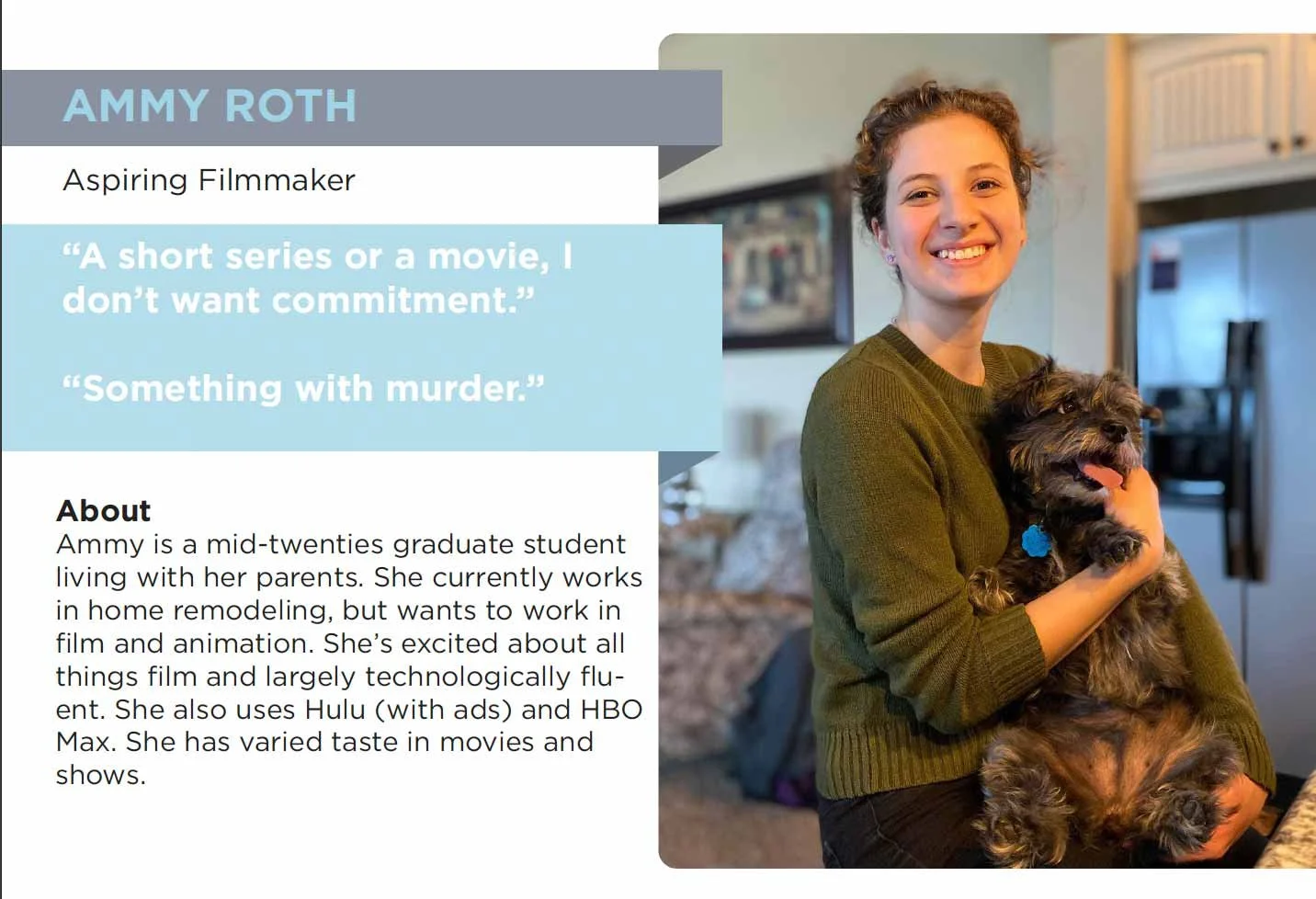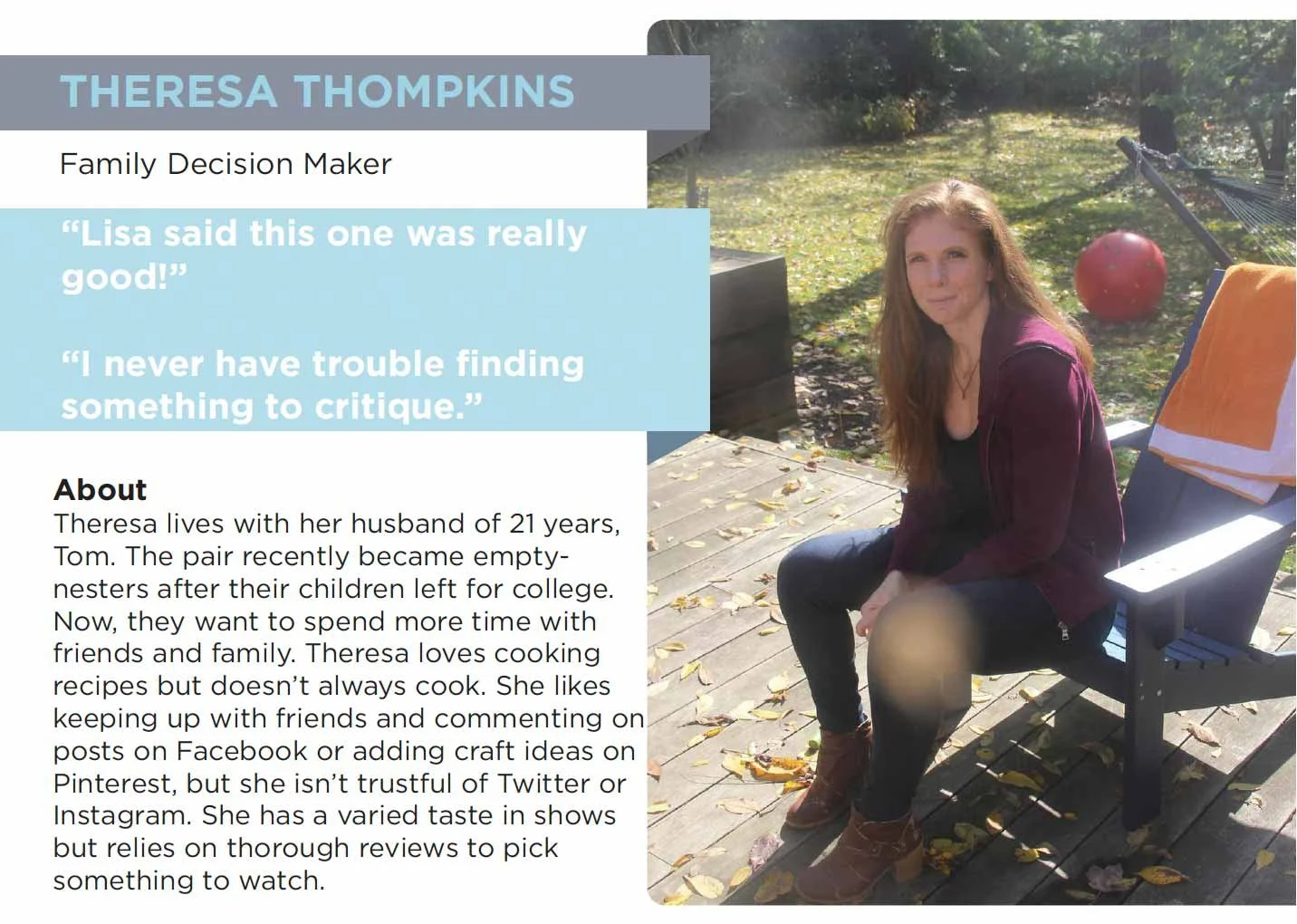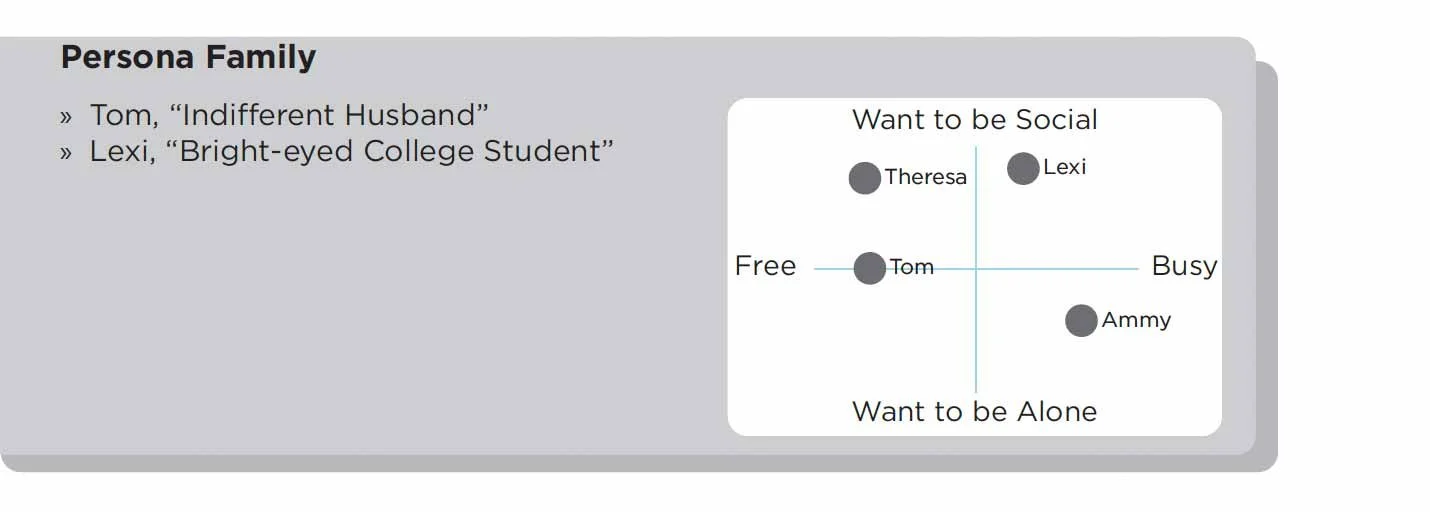Using Empathy to Make Personas
Traditionally, marketing teams geared their designs toward a general consumer demographic. In doing so, they established a "one size fits all" approach to features and functionality. However, as society grows more reliant on technology, we increasingly expect customizable products and services. Therefore, UX designers must now cater to specific consumers’ needs and desires to keep up with changing times. So, how can they better understand their target consumers? Personas build empathy and relatability to your designs by considering more personal details than basic demographic information.
What is a persona?
A persona is a representation of your target consumer(s). The persona isn't based on a single (or necessarily real) individual but rather created from multiple people with similar behaviors, technology use, preferences, lifestyle choices, etc. By creating a persona, you can communicate to your team who they are designing for and, thus, what they need to consider in their designs. Personas also offer a realistic, relatable, and referable character for your team’s design focus.
User Persona for Ammy
Personas model and convey research notes and patterns to your team with a humanized representation of someone they might know. This is especially helpful to communicate user-based research with team members who weren’t available for research. The goal, however, is to represent the major needs of the most relevant users, not necessarily all possible users. Designers can empathize with these personas to make real-world decisions from the perspective of that target user. The persona is a concrete deliverable that combines ethnography, market research, and strategic planning to determine technological needs and user goals.
Why make personas?
It's easy to get lost in creating "cool" or eccentric technology, but most people don't need "cool" designs; they need functional designs. The best tech is created by designers who can empathize with their users’ lifestyles, goals, and personalities. Many design teams will have a variety of quality approaches to improving user experience, but the persona is often the most effective. Not only can developing personas be amusing, but they make the design process more personal and impactful.
What are Personas used for?
Empathy
Using personas allows designers to step into someone else’s shoes and make critical design decisions from the user’s perspective.
Emphasis
Personas help design teams prioritize the most important users and their latent needs. By creating personas with tailored information, the team can narrow down which users to focus on in their designs.
Expression
The persona document communicates user research to all team members, regardless of whether all members were present during interviews. Creating an expressive model for the target user ensures the team stays on the same page.
Effectiveness
Tight budgets and impending deadlines call for quick decisions. Personas can stand in for users in design scenarios when the team is in a pickle.
Personas shouldn't be confined to any one department or project. Sharing personas with the entire business unifies various development, marketing, and customer support projects. In addition, distributing the personas helps "socialize" these characters within the organization, making your associates feel more involved with the design process. Including department leadership in the persona development process also makes team leaders more cooperative.
Photo by Bonneval Sebastien on Unsplash
Creating personas looks beyond surface-level demographics and delves into a deeper consideration of the users’ personalities, lifestyles, and expectations. Essentially, personas guide you to a personal understanding of what the user wants and why they do things they do. With a thorough comprehension of the consumers’ motivations, you can develop innovative designs and products.
How do you make a persona?
Now, how do you create a persona? According to Ben Ralph in Creating Personas, the best way to start creating a persona is to ask yourself, "What is it about your users that your team should know, remember, and reflect on every day?" From there, he recommends allowing your research to determine the layout rather than limiting your research to fit in a layout.
The first step in the persona-making process is conducting research. You need to figure out who your users are, why they are using (or should use) your program, and what lifestyles, expectations, or behaviors influence how they perceive your designs. Generally, the first round of interviews encompasses various demographics amongst your users. It's also beneficial to conduct interviews in a familiar environment to gather ethnographic information.
Photo by UX Indonesia on Unsplash
Next, use data trends to condense your research. Look for patterns in the subjects’ responses and behaviors to identify specific themes relevant to your program. These patterns and trends help you cluster similar people and personalities together for your personas. Then, you can form these “clusters” into representational models of those personality types.
Once you've formed rough personas from your personality "clusters," the third step is another round of interviews. This time, however, recruiting for the interviewees should be primarily based on each persona's behavior and personality criteria. For most projects, this set of research helps fill in gaps from the first interviews and confirms noted characteristics for the rough personas. This is also a great chance to home in on specific behaviors or motivations that relate the personas to your product.
Effective Personas:
Embody your primary and most important user(s).
Express those users’ needs and expectations.
Envision how your target users will most likely use and interact with your program.
Exhibit universal features and functionality.
Elements of a persona:
A persona should include the following but can include any additional information you believe is relevant to your project:
Name (fictional or based on interviewees)
Representational image of the user (something that would visually express their personality, not a generalized photo)
Role or group trait (try creating a name that is specific to the user’s behavior)
Demographics (if relevant to the project)
Quote that showcases the user’s personality or priorities (it’s often best to use quotes from interviews rather than make one up)
Goals the user wants to achieve with your program (and additional goals that are relevant to your project)
Tasks the user does to reach their goals (this can also include actions or tasks they complete outside of your program to reach relevant goals)
Motivations and inhibitions to reaching their goals
Environments and influences that affect how the user interacts with your program (including physical, social, and technological)
Persona at-a-glance:
Let's be entirely honest here: the workplace is harried, and designers are busy. The most important part of your persona is comprehending important characteristics at a glance. We tend to be visual learners as humans, so interesting visuals catch our eyes and stick in our minds. The persona's representational image should effectively encompass the user's personality traits and be associated with a comparable name. Using a relevant name also gives your team a quick way to reference the persona. Before deciding on an image, ask yourself what feelings and traits you want to express first.
Where does the consumer use your program?
Are they alone or surrounded by children or college roommates?
Will they adapt to a new technological interface quickly?
Will they focus solely on your program, or can they multitask while using the program?
User Persona including Name, Role, and Quotes
What role sets this user apart from others? You can create adjectives or short descriptions that make the persona unique. A short and appropriate quote makes the persona more realistic and insightful. One or two quotes are likely enough, but they make a great difference in building empathy amongst your team. Finally, demographics can be helpful, but only if relevant to your project. Unnecessary demographics will clutter your persona and make the document more difficult to comprehend.
Intimate Insight:
When you or your team wants to focus on specific qualities or characteristics of the persona, here’s your chance to list the deeper and more intimate insights into the user’s perspective. This will primarily bring awareness to the user’s motivations. For example, what goal does your consumer want to achieve, both within your program and in other relevant areas? Most of this will come from your second round of interviews and help you dig deeper into the persona's latent needs. What inspires them to move toward that goal?
Goals and Task for the Persona, “Theresa”
This is also a good place to list pertinent behaviors or actions the user might have done or expressed in the interviews. These convey significant user problems that you can learn to solve to add value to your program. List tasks your user currently performs to accomplish their goals related to your program. Where is the user most likely to get confused or frustrated? What features entertain users the most?
Next, ask yourself how user motivation interconnects with user ability. Highly motivated consumers will go to greater lengths to accomplish something, but easier steps can convince even the unmotivated to complete tasks. What inhibitions prevent the consumer from using certain features or performing tasks? Then, determine how the user’s motivations, abilities, and inhibitions correlate to each other in relation to completing tasks.
Where do you foresee the persona using your program? Name environments and/or scenarios that will impact how the target user interacts with the software. Note any tools or devices the users will use to access the program. Then, determine how the consumer uses or interacts with your program in their environmental context.
Finally, who (or what) influences the user’s decisions? Do they rely on family or support their own children? Are they attending college and influenced by roommates? Every person will have internal incentives but will likely be pressured by outside forces. You can optionally create a persona family that defines the relationship between personas. A persona matrix lets you map out the relationships between personas and the characteristics they might have in common.
Here, I completed two personas for Netflix. One of these represents me as a user while the other represents another target user for the website.
Personas can be extremely effective for building empathy and emphasizing pertinent features. On the contrary, incomplete or inaccurate personas render the effort moot. The key to a worthwhile persona is limiting user information to only the most important details. These deliverables humanize research by adding qualitative and relatable traits and goals. Shlomo Goltz, “The fundamental premise of user-centered design is that as knowledge of the user increases, so too does the likelihood of creating an effective design for them.”
Goltz, S. (2014, August 6). A closer look at personas: What they are and how they work, part one. Smashing Magazine. Retrieved February 20, 2022, from https://www.smashingmagazine.com/2014/08/a-closer-look-at-personas-part-1/
O'Connor, K. (2011, March 25). Personas: The foundation of a great user experience. UX Magazine. Retrieved February 20, 2022, from https://uxmag.com/articles/personas-the-foundation-of-a-great-user-experience
Ralph, B. (2017, May 21). Creating personas. A guide, not a template. Medium. Retrieved February 20, 2022, from https://medium.com/beakerandflint/personas-74c4e1c12ee2
Staff Writer. (2013, October 9). Personas. Usability.gov. Retrieved February 20, 2022, from https://www.usability.gov/how-to-and-tools/methods/personas.html










